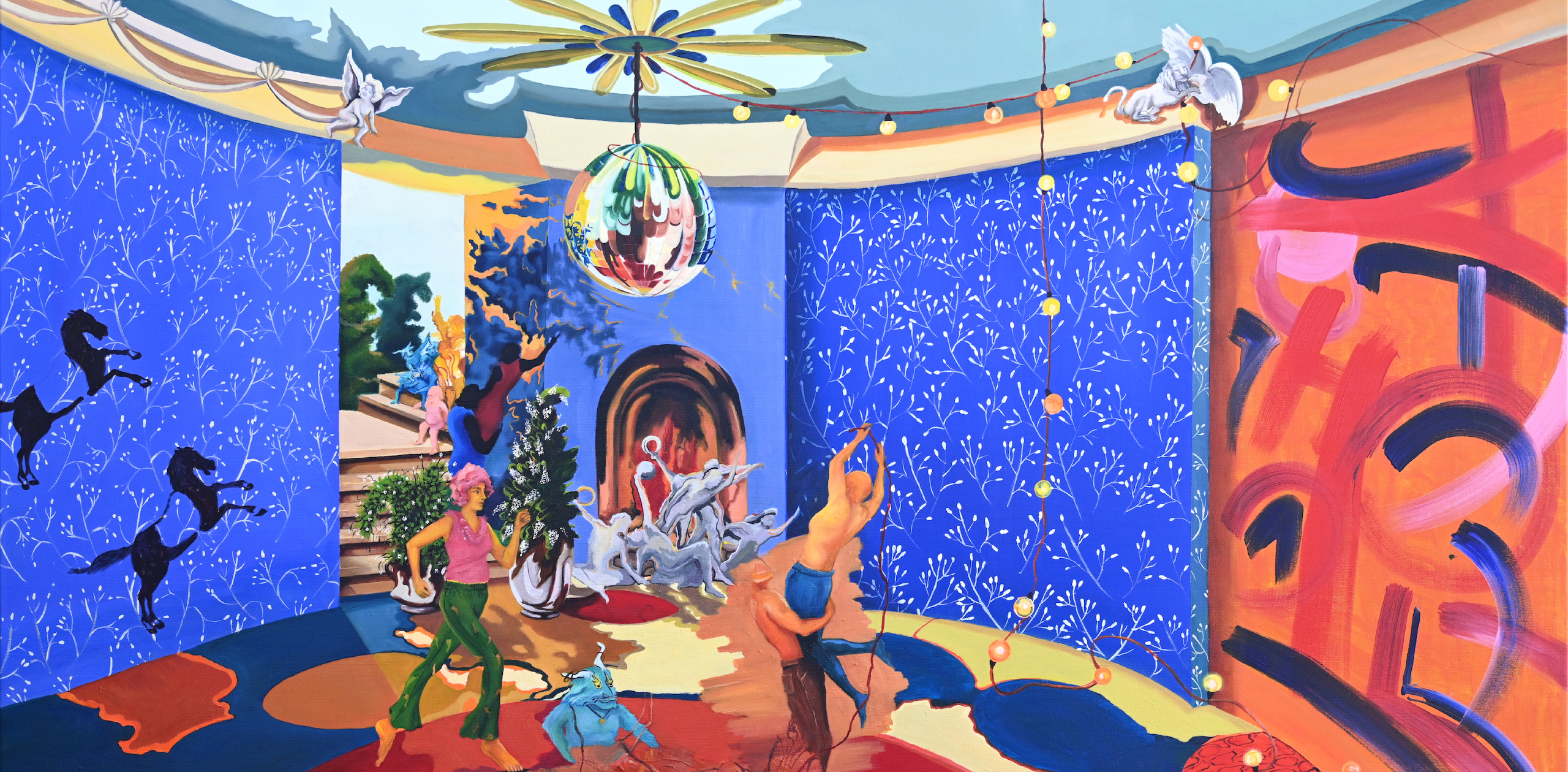
5 May – 28 July, 2024
Whispers of Legends
Leila Eskandari
Location: Dubai
Mythological figures and creatures come together in fluid dreamscapes filled with vivid colours, plants, and patterns. This is the imaginary world of Iranian artist Leila Eskandari, who draws inspiration from folkloric tales to create dynamic, shifting compositions that reflect on her personal memories as well as wider human experience. Whispers of Legends, her solo exhibition at Zawyeh Gallery, explores the power of stories to transcend temporal, geographical, and cultural boundaries.
For this latest series of paintings, Eskandari looks specifically to the Shahnameh, or the Book of Kings, an epic poem completed by the Persian writer Abolqasem Ferdowsi in the early 11th century. Consisting of more than 50,000 rhyming couplets, the Shahnameh serves as a compendium of Iranian myths, legends, and historical episodes and has fascinated Eskandari since childhood. ‘Everywhere I have ventured, I have endeavored to forge connections between the spaces and characters from those tales and the environment that surrounds me,’ she says. In other words, the stories have shaped her perspective of the world, just as myths across all cultures have helped civilizations for centuries to make sense of nature, the cosmos, and human existence.
This blurring of myth and reality is described through Eskandari’s intense colour palette and undulating lines. In the landscape works, natural forms – mountains, trees, the sky – melt into one another while concrete details such as electric pylons and fencing represent the intrusion or looming presence of reality. Elsewhere, we encounter acrobatic, hybrid figures and demon-like creatures within domestic settings. In one painting, they appear dancing in a pattern-filled room beneath a glittering silver disco ball. A string of lights trails from the ceiling onto the floor, signaling, perhaps, the beginning or the end of a party, but also, and importantly for Eskandari, symbolising the power of hope in the face of fear or, as she puts it, ‘the ultimate victory of light over darkness.’ The fact that these lights are not yet fully installed evokes the idea of a work or an idea-in progress – the building of strength, which for the artist comes through the act of art making.
Similarly, in another painting, this one depicting a bright yellow room with tall sunflowers sprouting up the walls and tinsel – another symbol of hope – hanging from a silver ceiling fan, we seem to enter the scene moments before or after the main action occurred. What these ephemeral moments capture is not so much a complete narrative but rather a collage of references that comprises literary works and current affairs as well as Eskandari’s own memories and emotional states. As Eskandari notes: ‘Through the retelling of myths across various cultures, we often discover striking resemblances, albeit presented through distinct characters or alternate narratives. Even when the names and roles differ, we encounter familiar archetypes and heroic figures that resonate with the human experience.’
In this way, Eskandari creates her own modern-day compilation of myths that carry us not just through space but also time. Each work is embedded with specific cultural references and personal emotional experiences, and yet the other-worldly, fluid forms and rich colour palette also transport us into an imaginary realm where we are free to create our own stories.
Join our Newsletter
Sign up for our Newsletter and get all the latest news

